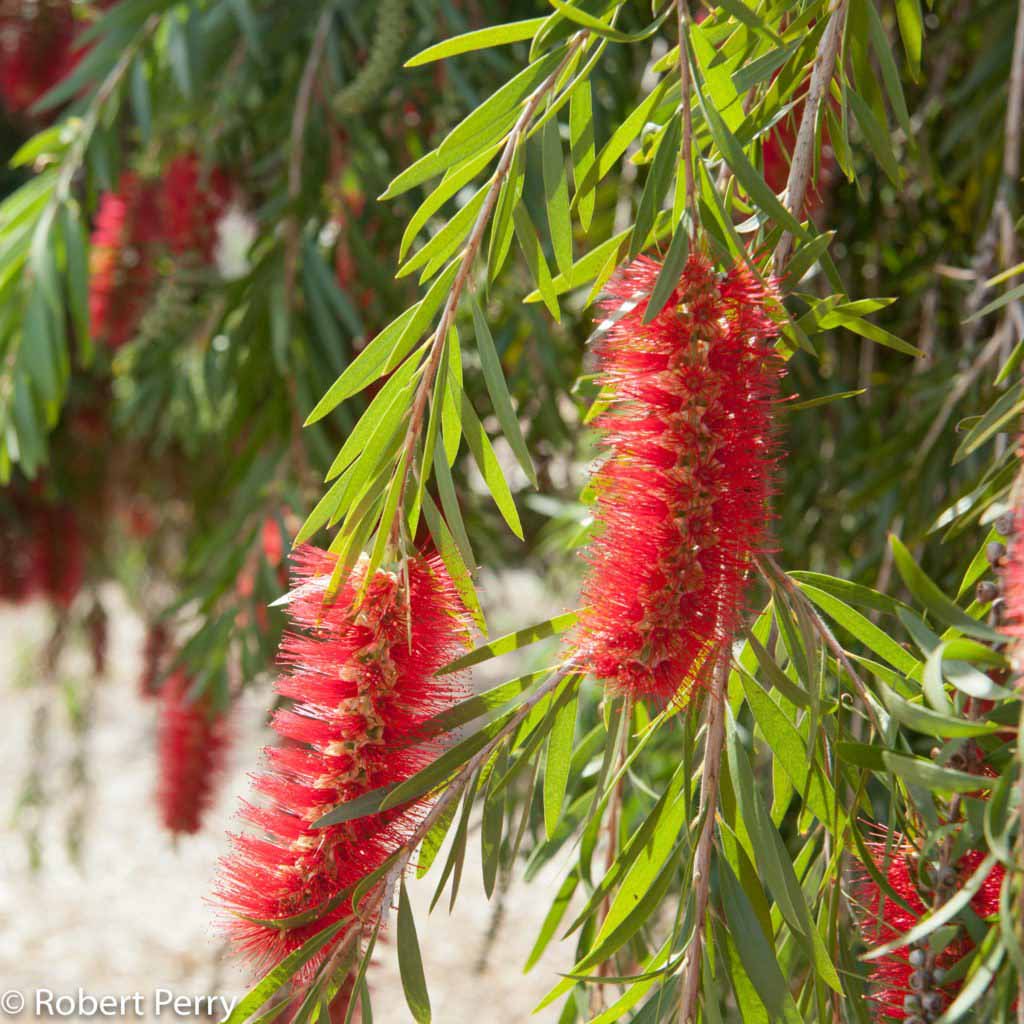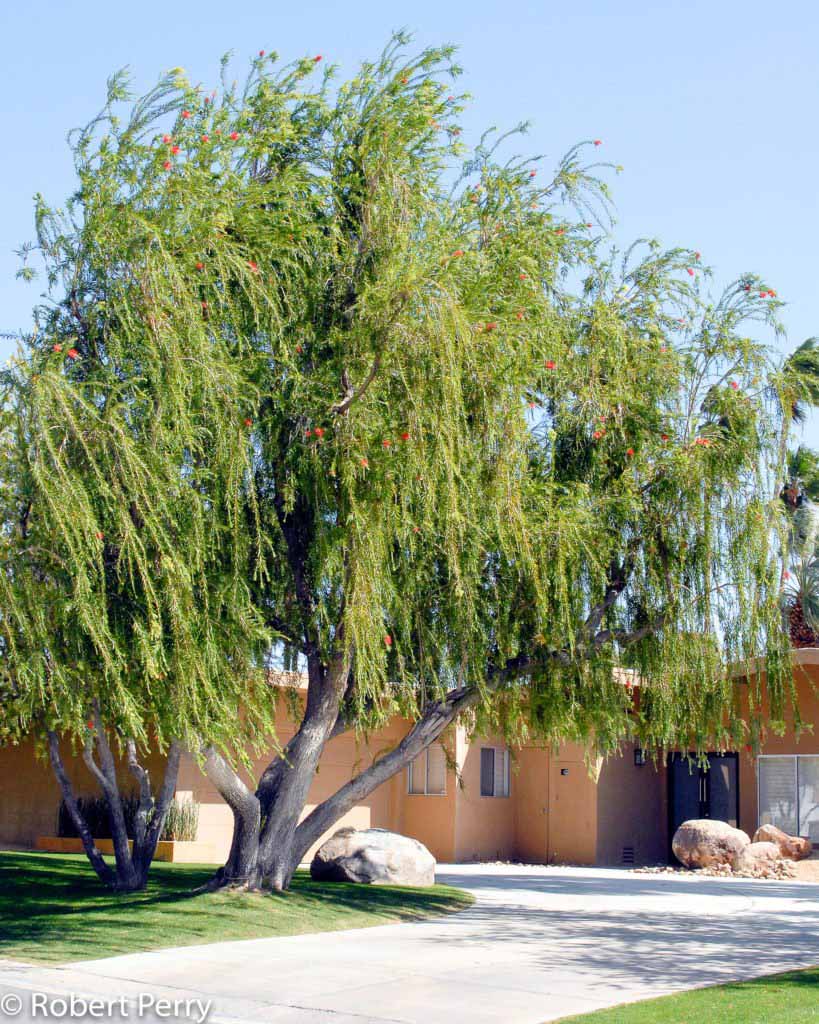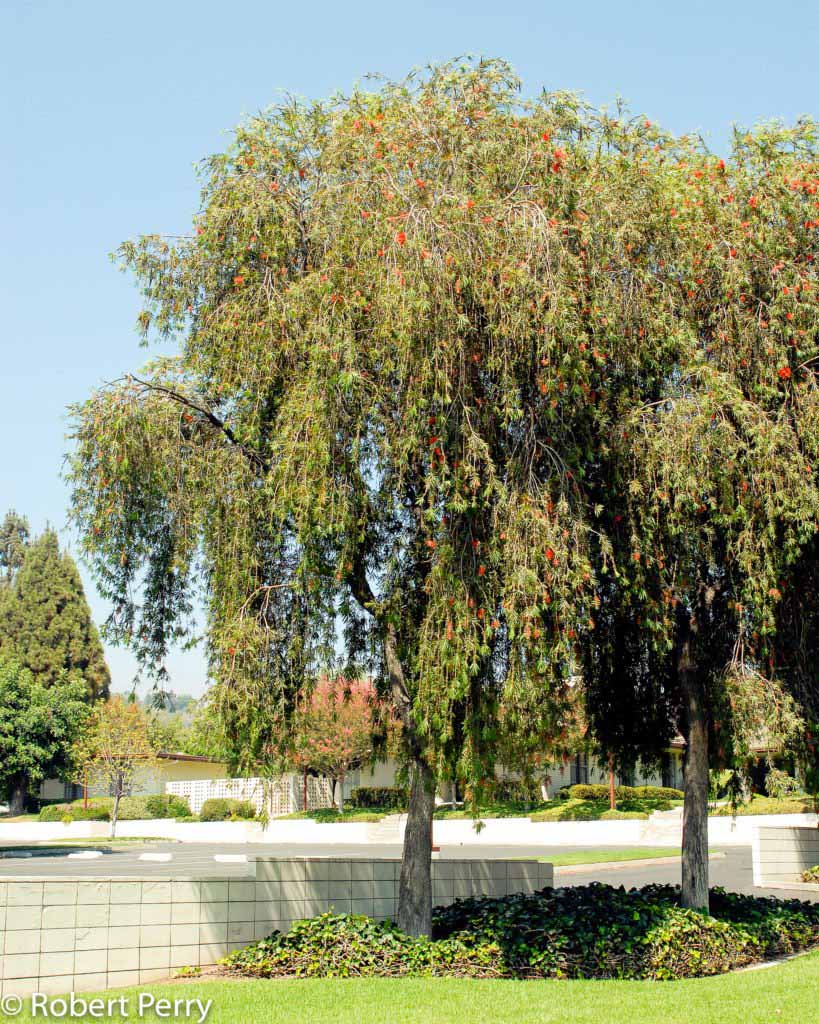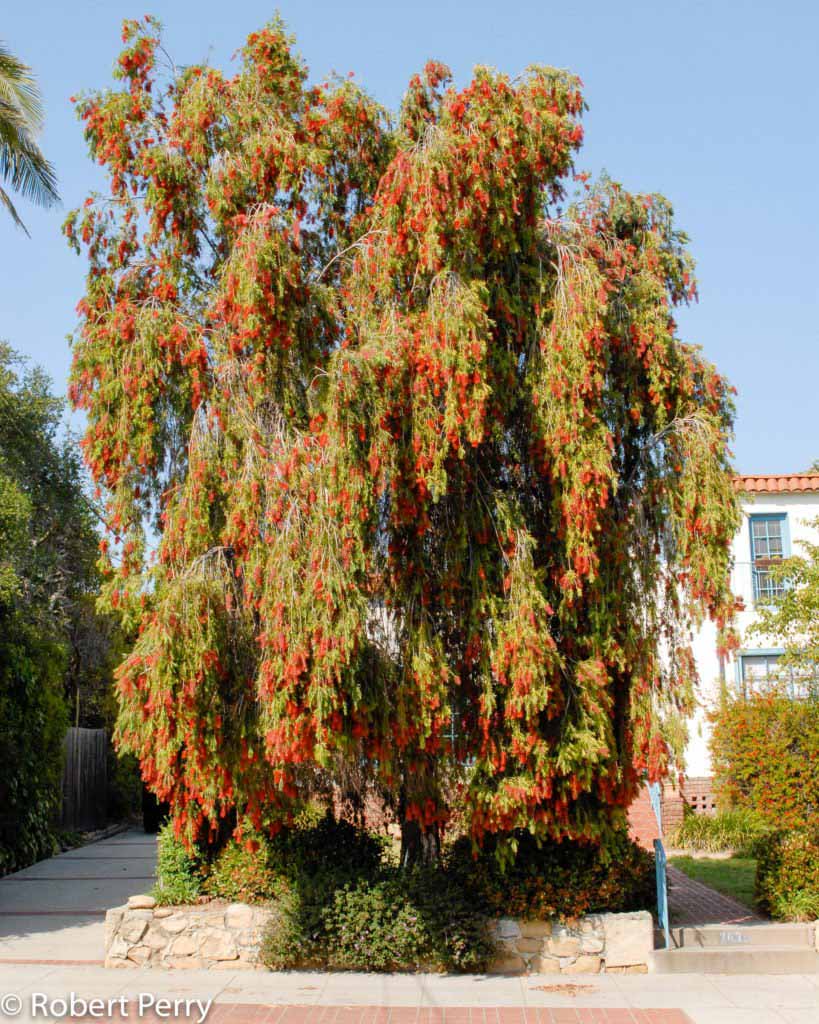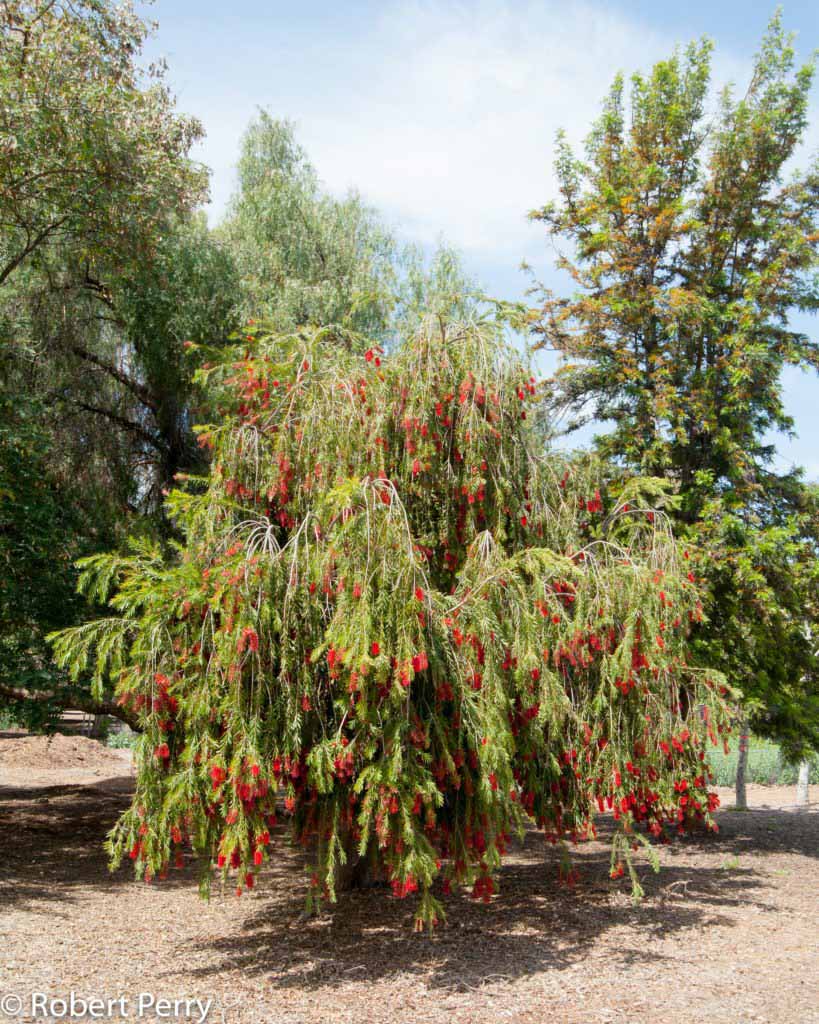Please note:
For most situations, we would not recommend installing this plant in new gardens, landscapes, or plantings in southern California.
Depending on the situation and desired qualities of the tree, our top recommendations to consider instead of weeping bottlebrush include desert willow, pink chitalpa, toyon, western redbud, and Desert Museum palo verde.
This plant profile is included in this site as a reference for two primary reasons:
- If you already have this plant in your landscape, this information can be used to know how to care for it.
- If you already have this plant in your landscape, you can use this information to learn which of our recommended plants have the same recommended watering needs, making them potential choices for grouping together if you will be adding new plants to the existing area.
In general, instead of this plant, we recommend planting appropriate California native plants whenever possible.
In addition to their beauty, California native plants offer the most additional benefits beyond just low water use, including habitat for the birds, butterflies, and pollinators who evolved here with them. This adds value and beauty in your landscape beyond just a pretty plant, allowing the landscape to actively contribute to the environment instead of just using less water. You can find our top recommended native plant choices on our Plant Finder by selecting “California Native” and learn more about California native plants here.
To learn what exactly California native plants are and how they are different from other low water plants, visit this link.
For visual interest or other reasons, some people may also want to mix in other non-native low-water demanding plant choices even though they do not have the same ecological value as native plants. For that reason, we feature a number of non-native waterwise selections on this site as well. However, we see native plants as the best “go to” for most landscape or garden choices! We encourage people to consider planting at least 50% of their landscape to native plants. See our Garden Designs section or visit our Waterwise Demonstration Garden in Montclair for plenty of inspiration.
————————————————————————————————————————————————
The Weeping bottlebrush grows into a medium size tree 20-30 ft. tall with an upright form and weeping branches. Young plants grow for many years into narrow columnar plants, 10-15 ft. wide, but become increasingly broad, eventually reaching 20-25 ft. in width. Foliage is comprised of soft narrow pale green leaves that hang from drooping branches to create a weeping appearance. Red flowers occur in early to mid spring as well as occur intermittently throughout warm months of the year.
Weeping bottlebrush comes from stream banks and coastal plains across eastern Australia where it grows with regular moisture and mild temperatures. However, like other bottlebrush species, it has proven to be widely adaptable in cultivation and tolerates summer dry and warm conditions, and winter temperatures to 20-25°F . It is commonly used as a street tree, background screen and weeping accent plant in residential and commercial gardens and landscapes. When in bloom it attracts many, many honeybees.
Several cultivars are currently available from nurseries, including: C. v. ‘Captain Cook’ is a compact selection, 4-6 ft. tall and as wide, with dense narrow leaves and crimson red flowers; C. v. ‘McGaskillii’ is a robust and colorful variety reaching the same height as the species, but has a more columnar form; and C. v. ‘Red Cascade’ is a standard size cultivar growing to 25 ft. tall, 15 ft. wide, with larger clusters of hanging red flowers.
